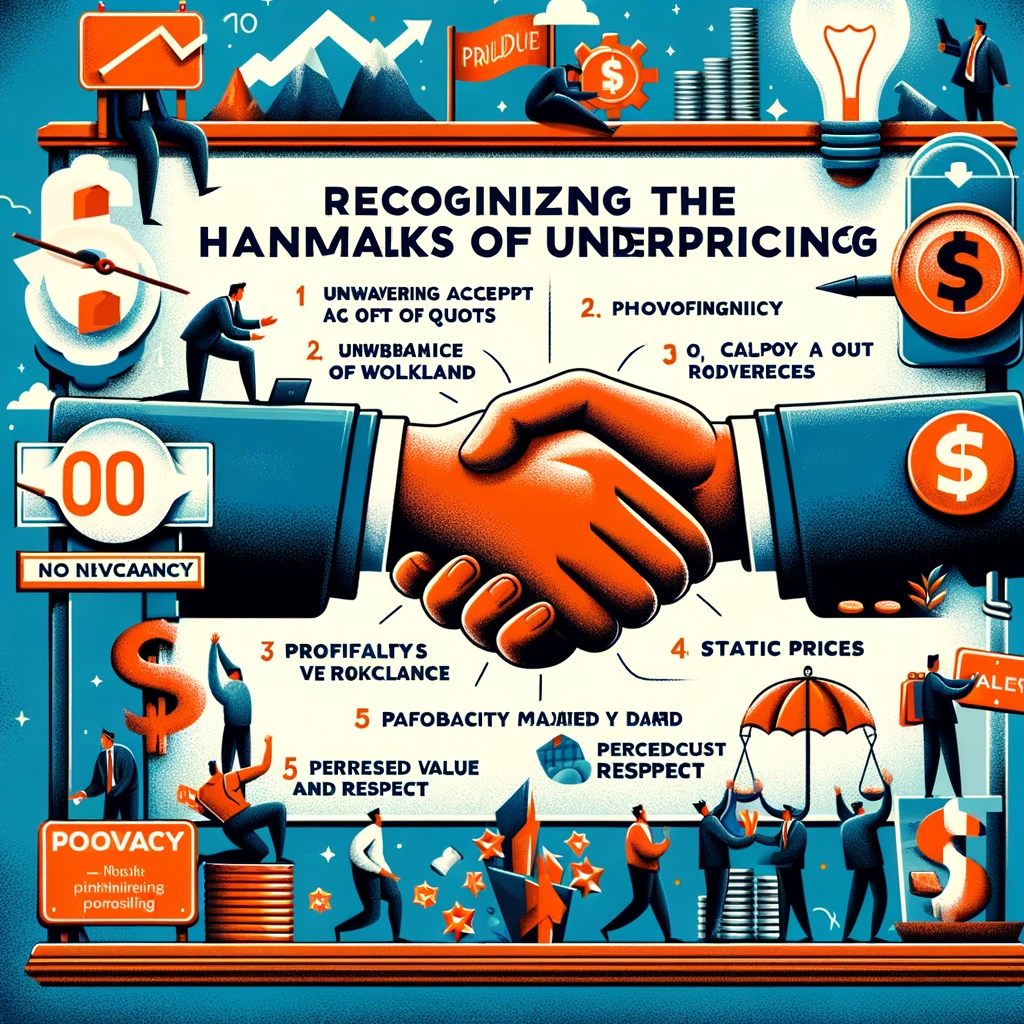
In a world where every penny counts and the market is more competitive than ever, understanding and implementing the right pricing strategy for your business is not just important—it’s imperative. Pricing is not just a number tagged to a product or service; it’s a complex decision that affects how your brand is perceived, how competitive you are in the market, and ultimately, the profitability and sustainability of your company. For any company, where precision is paramount, grasping the value-based pricing approach alongside other strategies like cost-plus pricing, penetration pricing, and dynamic pricing can be the difference between thriving and merely surviving.
Pricing is the process of determining what a company will receive in exchange for its products or services. Fundamental to business strategy, pricing can be considered both an art and a science. It is one of the most critical components that defines the value of the product or service offered. Beyond mere costs, pricing embodies the essence of what the company stands for and its positioning in the market.
Pricing, fundamentally, is the process of assigning monetary value to a product or service. It is the tactic by which a business communicates the worth of its offerings and determines the return on investment for its innovation, quality, and service. Pricing goes beyond mere cost—it reflects the brand, quality, and the market position a business aims to achieve.
A well-defined pricing strategy is pivotal to your business’s success. It’s not just about covering costs or making a profit; it’s about understanding the value of your product or service to the customer and setting a price that reflects this value. A pricing strategy that aligns with your business goals and market position can significantly enhance willingness to pay and bolster the overall health of your financial statements.
Competition-Based Pricing Strategy in Marketing
In a market teeming with alternatives, a competition-based pricing strategy is key to staying relevant. By analyzing your competitors’ pricing and positioning your product or service accordingly, you can create a strategic advantage. This pricing strategy ensures that you are not pricing yourself out of the market and are staying in line with customer expectations.

Economy pricing is a no-frills pricing strategy that is designed to attract the most price-conscious consumers. This approach is characterized by a low pricing model, minimal marketing expenses, and a focus on the cost of products and services.
The Loss Leader Pricing Strategy involves setting the price of a product or service below its market cost to stimulate the sales of more profitable products or services. A good examples is a company like microsoft, that sells a xbox at a discounted price while making higher profits on games
Retailers often employ the High-Low Pricing Strategy to create a sense of value among customers. Prices are initially set high and then discounted over time. In service industries , this strategy can also be used by offering promotions or discounts on certain services at specific times, such as weekdays or off-peak hours. This creates a sense of urgency for customers to take advantage of the lower prices, making them feel like they are getting a good deal.
Penetration Pricing strategy is a growth-focused pricing strategy where a product or service is offered at a lower price than the competition to attract customers. Once a firm foothold is established in the market, prices are gradually increased. This strategy can be particularly effective when launching new products or entering new markets.
Psychological Pricing leverages human psychology to encourage purchases. For Example, pricing items at R0.99 instead of R1.00, or R199 instead of R200. The slight reduction in price can significantly increase the customer’s willingness to pay, as the product appears less expensive than it actually is.

Premium Pricing is a strategy used by businesses to set the cost of a product or service higher than the industry average to create a perceived value. Customers often associate higher prices with superior quality. It’s essential for businesses considering this strategy to ensure that the value of their product or service is evident to justify the higher price point.
For example, luxury car companies, like BMW or Mercedes-Benz, position their vehicles as high-end, offering advanced technology, luxurious interiors, and superior performance. (Although I’d love to see what they have that my Honda CR-V doesn’t.) With those high-end features comes a high-end price tag
How Do You Determine the Selling Prices of a Product?
Value-Based Pricing sets prices primarily, but not exclusively, on the perceived or estimated value of a product or service to the customer rather than on the cost of the product or historical prices. This approach can help firms maximize profits and customer satisfaction by aligning prices with the value.
Bundle Pricing is a pricing strategy where multiple items are sold as a single package at a reduced price compared to purchasing each item separately. It increases the perceived value and can move inventory faster, benefiting both the customer and the business.
The Freemium Pricing is a pricing strategy, the model offers a basic service for free while charging for advanced features. This strategy can attract users to your platform with no initial investment and provide an opportunity to upsell as the value of the premium features becomes apparent.
Subscription Pricing is a business model where a product or service is offered at a recurring price at regular intervals. It’s beneficial for ensuring a steady cash flow and can help businesses predict revenue more accurately.
This strategy involves setting prices based on what your competitors charge. It can be an aggressive strategy to undercut competitors on price or a more conservative approach to match industry standards, ensuring that your products remain competitive. For example , if you offer a similar product at a lower price than your competitors, it can attract customers who are focused on getting the best deal.
Another common pricing strategy is cost-plus pricing, which involves adding a markup percentage to the cost of production. This approach ensures that all costs associated with creating and selling a product are covered while also providing a profit margin. The challenge with this strategy is that it does not take into consideration the perceived value of the product to customers, which can result in lower profits and customer dissatisfaction. For example , if the cost of producing your product is R10 and you add a 20% markup, the price would be R12.
While cost-plus pricing may seem like a simpler method for determining prices, value-based pricing offers several advantages. By focusing on the perceived value of a product or service, businesses
To successfully implement a value-based pricing strategy, businesses must thoroughly understand their target market, how much they are willing to pay for
Dynamic Pricing allows businesses to adjust prices on the go in response to market demands. With the use of AI and analytics, prices can change based on time of day, customer demand, and inventory levels. It is a strategy often seen in airline ticketing and hotel booking.
Instead of guessing, businesses should employ data-driven pricing strategies. This involves analyzing extensive data points to set prices that not only cover costs but also optimize profits, customer satisfaction, and market position.
Your pricing strategy is a fundamental part of your marketing strategy as it helps to position your business in the market, indicates the brand’s value proposition, and affects the perception of your products or services. The price you set can either enhance or detract from the marketing efforts, depending on how well it communicates the value of what’s on offer.
It’s critical to gauge how your pricing affects customer behavior. Do they view your prices as fair? Are they driven to your competitors? Understanding this will guide you in adjusting your pricing strategy for maximum effectiveness.
Commerce landscape and pricing their platforms competitively, they have carved out a significant niche, making them a go-to solution for online retailers.
Creating an effective pricing strategy requires a structured approach:

Gather Data: Compile data on your products, the market, your competitors, and your customers.
Segment Your Market: Understand the different segments and their price sensitivity.
Analyze Competitors: Look at competitor-based pricing strategies and where your offerings fit in.
Assess Costs: Determine the true cost of your product or service, including overheads.
Evaluate Value Proposition: Consider how much value your product or service provides to the customer, which is the core of value-based pricing.
The cost-plus pricing strategy is grounded in the calculation of production costs with a markup percentage for profit. It’s crucial to include all direct costs, such as materials and labor, and indirect costs like overhead. The simplicity of this method lies in its transparent formula, making it a reliable starting point for many businesses.
Value-based pricing is predicated on the perceived value to the customer. This strategy demands in-depth market research to understand what customers are willing to pay for a product’s benefits. It’s about aligning the price with the product’s value in the customer’s eyes, not the cost to produce it. To make this strategy work, you need to have a deep understanding of your target audience and what motivates them to make purchases.
Tiered pricing offers customers options at various price points, usually distinguished by feature sets or usage levels. This strategy requires a clear understanding of your customer segments and their respective needs, allowing you to cater to a broader market with differentiated offerings. As a result, you can capture more customers that may have different budgets or needs.

This flexible approach allows customers to pay a price they feel is fair for the product or service, often used to generate buzz or for products with low marginal costs. To set this up, businesses need to create a strong brand connection and perceived value that motivates customers to pay an amount that is still profitable. As a result, customers feel empowered and are more likely to become loyal advocates for the brand.
The freemium model offers a basic service for free while charging for premium features. To set this strategy, determine the core value that can be given away and the advanced features that are worth the upgrade. It’s essential to ensure that the free version is valuable but leaves room for customers to want more.
This strategy involves starting with high prices and offering periodic discounts. To set this strategy effectively, businesses need to time their discounts strategically to drive sales during slow periods or clear out inventory, without eroding the perceived value of their offerings. To make this approach work, companies need to create a sense of urgency and scarcity for limited-time promotions.
Subscription-based pricing is becoming increasingly popular as more businesses move towards a subscription model. This approach allows customers to pay a recurring fee for access to the product or service, creating predictable revenue streams for the business. To make this strategy work, businesses need to focus on retention and continually provide value to keep customers subscribed.
With loss leader pricing, certain products are sold at a loss to attract customers. Businesses need to carefully select products that can lead to the purchase of additional, higher-margin items. The key is to balance the loss on the leader product with the profits from subsequent sales. Businesses will be able to maintain a competitive advantage and build customer loyalty by offering high-quality products at low prices.
Dynamic pricing strategy involves adjusting prices based on market demand, competitor pricing, and other factors. This approach allows businesses to quickly respond to changing market conditions and maximize profits by charging higher prices during peak demand periods.
Penetration pricing sets low initial prices to quickly gain market share. Businesses must ensure they can afford the initial lower margins and have a plan for raising prices once a customer base is established.
Premium pricing keeps a price high to signal superior quality or luxury status. Setting this pricing strategy requires a strong brand and marketing efforts that build a perception of exclusivity and prestige around the product.
Bundle pricing combines multiple products or services for a single price that’s typically less than the sum of the individual prices. To set this, identify complementary products that offer value when sold together and determine a bundled price that’s attractive yet profitable.
Psychological pricing uses pricing tactics that affect the customer’s emotional response, such as $0.99 endings. Setting this strategy involves understanding consumer behavior and how small differences in pricing can lead to a perception of a deal or savings.
Project-based pricing sets a fee for an entire project rather than individual tasks or hours. To set this strategy, businesses must accurately estimate the scope and complexity of projects and include a margin that accounts for potential overruns.
Subscription pricing involves charging a recurring fee for continued access to a product or service. To implement this, determine pricing tiers based on usage or features, and ensure the pricing structure supports customer retention and lifetime value.
Nonprofit pricing must reflect the organization’s mission while covering costs. Setting this pricing requires understanding the funding sources, donation strategies, and how pricing aligns with the organization’s goals.
In conclusion, each pricing strategy has its merits and considerations.
The key to setting yours is understanding your market position, costs, customer base, and long-term business goals. By aligning your pricing strategy with these core factors, you can create a model that supports sustainable growth and success.
Each method has its context where it shines, from bundle pricing which groups related products for a discounted rate, to premium pricing which targets the luxury segment.
Case studies can significantly impact willingness to pay as they showcase real-world applications and success stories of pricing strategies. For instance, how a dynamic pricing model increased a hotel chain’s revenue during peak season can serve as a compelling example to adopt similar pricing strategies.
Your pricing strategy should always reflect and support your overall business goals. Whether it’s maximizing short-term profits, achieving sustainable growth, or becoming a market leader, the pricing should strategically contribute to these objectives.
Accurate cost determination is the foundation of any pricing strategy. It includes direct costs like materials and labor, and indirect costs such as overhead and marketing. Cost-plus pricing is a common method that adds a markup to the cost to ensure profitability.
An example of project-based pricing is Courtney Samuel Events, which provides event planning services at a flat rate. This approach simplifies the pricing for both the client and the service provider and can be adjusted based on the complexity and scope of the project.
The Nonprofit Pricing Model often requires a different approach, considering the unique nature of these organizations. Pricing may be based on covering costs, supporting the mission, or market rates for similar services, adjusted to the nonprofit context.

In the intricate dance of pricing, it’s crucial to recognize the subtle signs that your pricing strategy may not be hitting the mark. Here are five indicators that could suggest your prices might be set too low:
Strategizing for Optimal Pricing
Finding that sweet spot for your prices isn’t a matter of guesswork but a strategic process that involves in-depth market research, competitive analysis, and an honest assessment of your costs and the unique value you bring to the table. It’s about striking a balance where your prices are not only agreeable to your clients but also profitable and sustainable for your business, ensuring that you’re not just staying afloat but actively thriving.
The art of pricing extends beyond the mere act of assigning a cost to a product or service; it is a critical business function that intersects with various aspects of market dynamics and consumer psychology. It’s an area ripe with strategies, each with its own merits, complexities, and applications.
1. Cost-Plus Pricing: The Foundation of Fairness
Also known as markup pricing, stands out for its simplicity and fairness. It involves adding a fixed percentage to the production cost of a product. This approach ensures that all involved parties—the business, its stakeholders, and the customers—engage in a transaction that is transparent and equitable.
2. Competitive Pricing: Navigating the Market Labyrinth
Competitive pricing, where prices are set in response to rival market offerings, necessitates a nimble approach. It may involve undercutting competitor prices or, alternatively, offering better payment terms. An in-depth competitive analysis is vital to navigate this labyrinth, ensuring that a business remains a formidable contender in its niche.
3. Value-Based Pricing: The Customer’s Perception is Paramount
With value-based pricing, the price is determined by how much customers value the business’s offerings. This strategy calls for a comprehensive understanding of the customer’s needs and desires and is often employed during times of heightened competition or economic downturns.
4. Loss Leader Strategy: The Enticing Entry Point
Loss leader pricing is a calculated gamble where a business sells a product at a loss to draw customers in, hoping that they will make additional purchases of more profitable items. This strategy is a play to increase market share and build brand loyalty.
5. Penetration Pricing: Seizing the Market Initiative
Penetration pricing is a tactical maneuver to capture market territory by offering products or services at significantly lower prices than competitors. While it can initially hinder profit margins, the long-term brand recognition and customer loyalty it fosters can be invaluable.
6. Everyday Low Pricing: Consistency is Key
Everyday low pricing is a commitment to consistently low prices, avoiding the rollercoaster of sales and special promotions. It’s a strategy that promises volume sales and steady profits, as demonstrated by retail giants like Walmart.
7. Economy Pricing Strategy: Stripped-Down Affordability
Economy pricing targets the most cost-conscious consumers, reducing prices to match production costs without additional marketing expenses. It’s a bare-bones approach that relies on high volume to maintain profitability.
8. Premium Pricing: The Allure of Luxury
Premium pricing is the hallmark of luxury and exclusivity. By pricing products higher than the competition, businesses signal to consumers the superior quality or uniqueness of their offerings. This strategy not only builds brand prestige but also ensures higher profit margins.
9. Price Skimming: Reaping Early Rewards
Price skimming allows businesses to set high initial prices for new products when consumer interest peaks, then gradually lower them to attract a broader customer base. This strategy maximizes early revenue and is often employed in the tech industry.
10. High-Low Pricing: The Price Dance
The high-low pricing strategy relies on initial high prices followed by promotions and sales, creating a dynamic pricing environment that stimulates consumer interest and sales. It’s a dance of prices that, when choreographed well, can lead to significant profits.
11. Dynamic Pricing: The Agile Approach
Dynamic pricing is an agile, demand-driven approach that adjusts prices based on various factors such as consumer demand and market conditions. Pioneered by industries like airlines and ride-sharing services, it represents the pinnacle of pricing flexibility.
Each of these strategies has its place and purpose within the complex tapestry of pricing. Employed wisely, they can not only drive sales and profit but also establish a brand’s position within the market and its perception in the minds of consumers.
Incorporating real-world pricing strategy examples, we can see how these pricing strategies unfold in practice:
1. The Precision of Cost-Plus Pricing:
A spectacle manufacturer using this pricing Methode calculates all costs, including materials, labor, and overhead, and applies a markup to ensure a fair return.
2. Competitive Pricing Strategy in E-Commerce:
Online retailers, such as Amazon, employ competitive pricing strategies to offer the most affordable prices. They actively monitor competitor prices to stay competitive. Notably, well-known brands like Fitbit can command higher prices due to brand recognition, demonstrating the nuanced application of competitive pricing.
3. Value Based Pricing Strategy: Cultivating Loyalty with Apple:
Apple’s pricing strategy revolves around customer perception of value. By offering an intuitive operating system and straightforward products, they have built a loyal customer base that perceives high value in their offerings, allowing Apple to command premium prices.http://www.apple.com
4. Loss Leader Strategy with Microsoft Xbox:
Microsoft sold the Xbox console at minimal profit margins to compete with the Sony Playstation. This loss leader strategy drew customers in, hoping they would purchase high-margin games and accessories.
5. Penetration Pricing and the Netflix Model:
Netflix initially offered low subscription rates to draw customers, gradually increasing prices as it offered an expanding library of high-quality content. Despite some customer resistance, the strategy has led to a substantial subscriber base worldwide.
Pricing strategy is a crucial aspect of any business, and it becomes even more critical for small businesses as they often operate on tighter budgets and face fierce competition. A well-designed pricing strategy can help a small business gain a competitive advantage, increase profitability, and attract loyal customers.
Here are some attributes that make up a good pricing strategy for small businesses:
In conclusion, a well-structured pricing strategy is a powerful tool for small businesses, laying a solid foundation for sustainable growth and success. It involves market research, understanding customer perceptions, comprehensive cost analysis, and offering variable pricing options. By implementing these strategies, small businesses can create a competitive edge, attract a diverse customer base, and ensure long-term profitability.
For a comprehensive guide to business strategies , read our other blog article about business strategy
https://blusolutions.co.za/business-strategy/

In the digital age, businesses must evolve to stay competitive. Going digital is no longer an option—it’s the foundation for